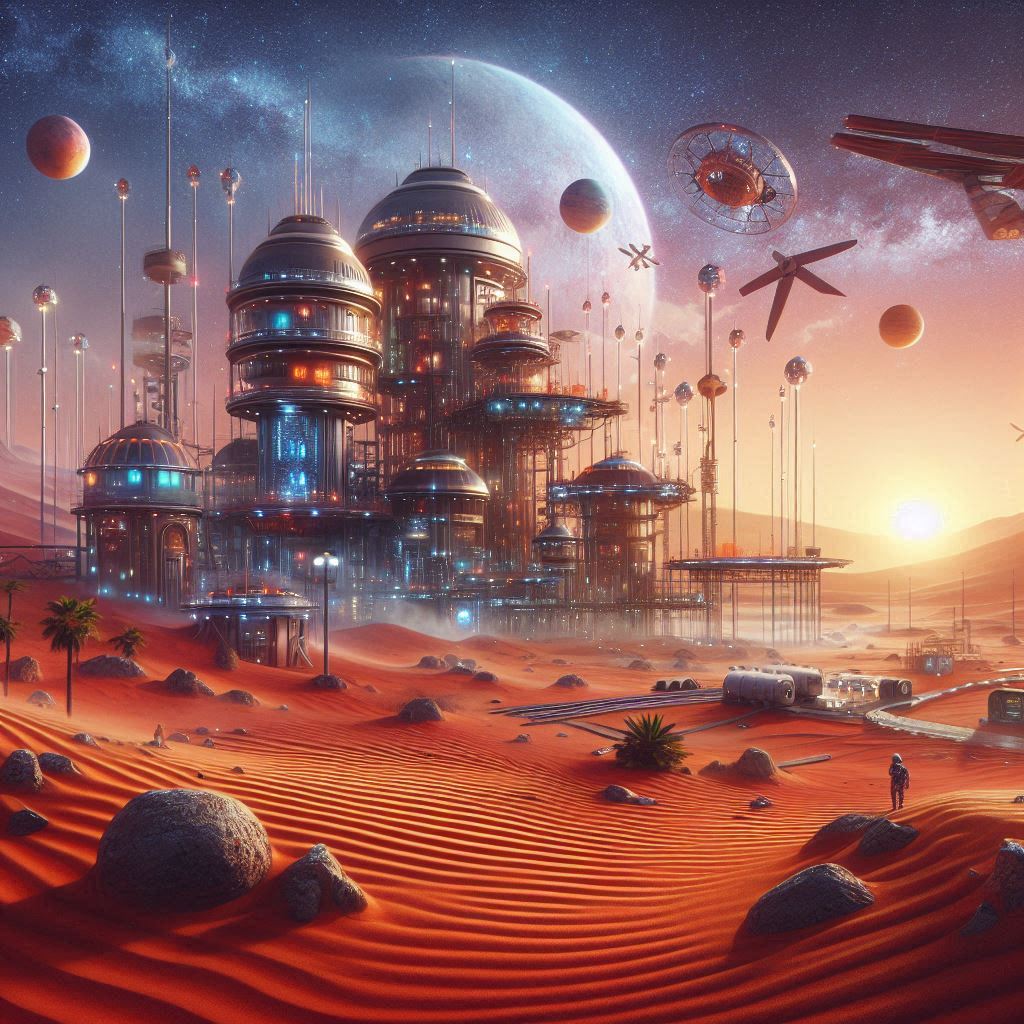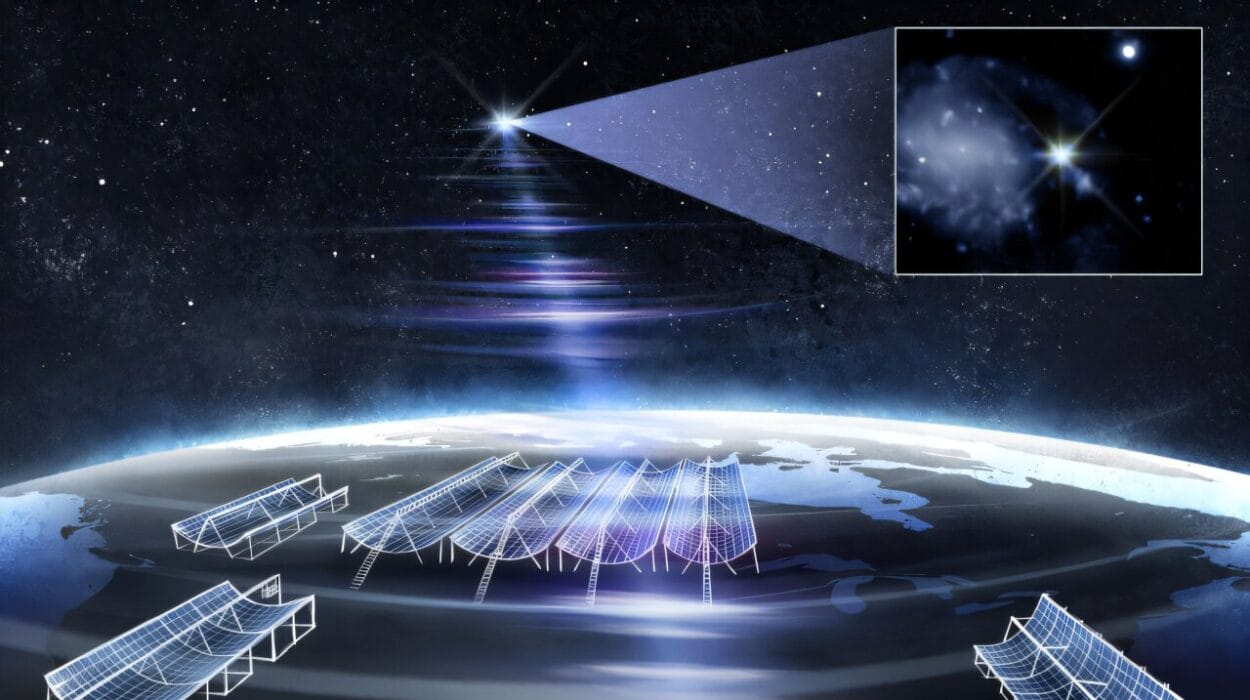From the moment our ancestors first gazed up at the night sky, they were captivated by a powerful yearning: the desire to explore the stars. Among those distant lights, one particular planet has always seemed within our reach—Mars, the red wanderer. Named after the Roman god of war, Mars gleams ominously in our night sky, glowing like an ember, taunting us with its possibilities. For centuries, it has sparked imaginations, inspired legends, and fed dreams of alien civilizations. But today, the idea of colonizing Mars, once relegated to the realms of science fiction, is rapidly shifting into the realm of science fact.
We stand at the cusp of a new era, one that could make humanity a multi-planetary species. Colonizing Mars is no longer just the stuff of pulp novels and epic films—scientists, engineers, and visionaries are actively crafting blueprints for humankind’s next giant leap. In this journey, we’ll explore how we got here, why Mars is the prime candidate for colonization, and how we might overcome the monumental challenges that stand between us and our second home.
Mars in the Human Imagination
Ancient Mars and Early Observations
Long before telescopes were invented, ancient astronomers noticed Mars’ peculiar reddish hue and erratic movements across the sky. To the Babylonians, it was Nergal, a god of war and destruction. To the Greeks and Romans, it was Ares and Mars, respectively—symbols of conflict and bloodshed. Its unsettling red glow cemented its reputation as an ominous force.
By the late 19th and early 20th centuries, as telescopes improved, Mars came into sharper focus. Italian astronomer Giovanni Schiaparelli mapped what he described as “canali”—channels—which American astronomer Percival Lowell misinterpreted as canals constructed by intelligent beings. The idea of Martians gripped the public imagination. H.G. Wells’ The War of the Worlds and Edgar Rice Burroughs’ Barsoom series fueled humanity’s fascination with Mars as a world teeming with life.
Science Fiction’s Martian Frontier
For much of the 20th century, Mars was a literary playground. Writers like Ray Bradbury (The Martian Chronicles), Arthur C. Clarke (The Sands of Mars), and Kim Stanley Robinson (Mars Trilogy) painted vivid pictures of Martian colonies, conflicts, and terraforming efforts. Their works explored the ethical, environmental, and social ramifications of making Mars our home.
But for all their flights of fancy, these authors often rooted their work in scientific possibility. They weren’t just telling stories—they were imagining futures that, one day, we might bring to life.
Why Mars? The Case for the Red Planet
With all the planets and moons in our solar system, why is Mars so special? Why not colonize Venus, or build floating cities on Jupiter’s moons? As it turns out, Mars has a unique combination of factors that make it our best candidate for human colonization.
Mars Is (Relatively) Close
Mars orbits an average of 225 million kilometers from Earth. That’s far—about six months’ travel using current technology—but manageable. Compared to the outer planets or even Venus, with its crushing atmosphere, Mars is a practical choice.
A Day on Mars Is Almost Like Earth
A Martian day, or sol, is 24 hours and 39 minutes—uncannily similar to Earth’s day. This makes adapting human circadian rhythms much easier than on other worlds.
Potential for Resources
Mars has water ice. Lots of it. Water can be turned into drinking water, oxygen, and even rocket fuel (hydrogen and oxygen). The Martian regolith (soil) contains essential elements like iron, silicon, and aluminum—potential building materials for habitats and tools.
Gravity: Not Too Much, Not Too Little
Mars has about 38% of Earth’s gravity. While it’s much less than Earth’s, it’s significantly more than the microgravity of the Moon or orbiting space stations, which wreak havoc on human physiology. Long-term effects of Martian gravity remain unknown, but it’s a promising start.
An Atmosphere—Thin, but There
Mars has an atmosphere, about 1% the density of Earth’s. It’s mostly carbon dioxide, which isn’t breathable, but it provides some protection from radiation and can be harnessed for fuel and plant growth.
The Challenges of Colonizing Mars
While Mars has a lot going for it, colonizing it is no small feat. Let’s break down some of the biggest obstacles humanity must overcome.
The Distance and Travel Time
A round-trip mission to Mars could take two to three years. Six months there, six months back, and over a year waiting for the planets to align for the return journey. Crews will face isolation, boredom, and no easy way to come home if something goes wrong.
Radiation Exposure
Mars lacks a magnetic field and has a thin atmosphere. Cosmic rays and solar radiation bombard the surface constantly. Without adequate shielding, astronauts face severe health risks, including cancer and acute radiation sickness.
The Thin, Toxic Atmosphere
Martian air is 95% carbon dioxide. Breathing it is impossible without life support. Pressurized habitats and suits are essential, and oxygen will have to be produced locally.
Extreme Cold
Mars is cold. Temperatures often dip to -80 degrees Fahrenheit (-60 degrees Celsius) and can plunge far lower at night or near the poles. Habitats must be well insulated and heated.
Dust Storms
Mars experiences planet-wide dust storms that can last for weeks or months. These storms block sunlight, disrupt solar power generation, and pose challenges for machinery and electronics.
Gravity’s Unknown Effects
We don’t know if humans can survive long-term in 38% gravity. Prolonged low gravity on the International Space Station has shown bone density loss, muscle atrophy, and vision problems. Mars colonists will need rigorous exercise regimes and possible medical interventions.
Building a Home on Mars—Step by Step
Despite the challenges, space agencies and private companies are racing toward Mars. Here’s how we might build the first Martian colony.
Step 1: Robotic Precursors
Before humans land, robotic missions will scout potential colony sites. These missions are already underway. NASA’s Perseverance rover is collecting soil samples, searching for signs of ancient life, and testing MOXIE—a device that converts carbon dioxide into oxygen.
Future robotic missions will:
- Locate water ice deposits
- Assess radiation levels
- Test 3D printing techniques for building materials using Martian soil
- Establish communication relays
Step 2: First Human Missions
NASA and SpaceX are aiming for crewed Mars missions in the 2030s. The first human landings will likely resemble extended camping trips:
- Crews of 4–6 astronauts
- Habitats brought from Earth or constructed using in-situ resources
- Limited surface operations lasting 30–90 days before returning to Earth
These initial missions will focus on survival, scientific exploration, and testing life support systems.
Step 3: Establishing a Permanent Base
Once initial missions succeed, the focus shifts to permanent settlement:
- Pressurized habitats, possibly buried underground or shielded with regolith to block radiation
- Greenhouses growing food using hydroponics and recycled water
- Nuclear reactors or solar arrays for energy
- ISRU (In-Situ Resource Utilization) systems to produce oxygen, water, and fuel
SpaceX’s Starship, designed for multiple flights and massive cargo loads, could deliver hundreds of tons of equipment to Mars.
Step 4: Expanding the Colony
The colony could expand to self-sustaining levels:
- Growing most of its food on Mars
- Recycling water and air almost completely
- Manufacturing tools, spare parts, and structures locally using 3D printing
- Potentially mining for useful minerals
As the colony grows, families could arrive. Children might be born on Mars—Martians, in every sense of the word.
Terraforming Mars—The Ultimate Vision
Some visionaries, including Elon Musk, dream of terraforming Mars—transforming it into a second Earth. But is it possible?
Warming the Planet
Mars needs to be warmed up to release its frozen CO2 and thicken the atmosphere. Proposals include:
- Giant orbital mirrors to focus sunlight on the poles
- Releasing super greenhouse gases to trap heat
- Using nuclear explosions at the poles (controversial and dangerous)
Creating a Breathable Atmosphere
As the atmosphere thickens and warms, liquid water could return. Plants and algae could help convert CO2 into oxygen. However, this process could take centuries or millennia.
Protecting Mars’ Ecosystem
Some scientists warn that terraforming could destroy potential native life forms. If Martian microbes exist, altering the environment might doom them. Ethical debates rage: should we transform Mars for human benefit or preserve it as it is?
Who’s Leading the Charge?
Colonizing Mars is no longer a fantasy, thanks to real organizations investing billions into Mars missions.
NASA
NASA has sent a fleet of rovers and orbiters to Mars. Their Artemis program aims to establish a Moon base as a stepping stone to Mars. NASA plans human Mars missions in the late 2030s or 2040s, focusing on sustainability and scientific discovery.
SpaceX
Elon Musk’s SpaceX is arguably the most ambitious player. Musk envisions a million-person city on Mars within 100 years. SpaceX’s Starship, fully reusable and capable of carrying 100+ passengers, is under development. Musk’s motto: “Making life multiplanetary.”
China
China’s Tianwen-1 mission successfully placed a rover on Mars in 2021. China plans human missions by 2033, with ambitions to build a Mars base and lead space exploration in the coming decades.
Other Players
Private companies and space agencies from Europe, India, Japan, and the UAE are also eyeing Mars. Collaboration—or competition—could shape the future of colonization.
Life on Mars—What Will It Be Like?
Martian Society
Life on Mars will be hard, at least initially. Colonists will face isolation, danger, and a pioneering lifestyle. Early Martians might live in pressurized domes, underground habitats, or even lava tubes.
Over time, Martian culture could diverge from Earth. Mars settlers may develop their own traditions, dialects, and ways of life. They’ll confront questions about governance: will Mars be ruled by Earth, or will it become an independent civilization?
Ethics and Governance
Colonizing another planet raises thorny ethical issues:
- Who owns Mars? The Outer Space Treaty of 1967 forbids nations from claiming celestial bodies, but private companies are pushing boundaries.
- Rights of Martian-born humans. What laws protect them? Will they be Earth citizens or Martian citizens?
- Planetary protection. Should we avoid contaminating Mars with Earth life?
The First Martians
The first Martian-born humans will represent a new chapter in human evolution. Mars’ gravity could shape their biology. Their society may value cooperation, resilience, and self-sufficiency. They will be pioneers, carving out a new existence on a harsh but promising world.
Epilogue: The Final Frontier Awaits
Colonizing Mars is no longer a dream; it’s an inevitable next step for humanity. The first footprints on the Red Planet will be a historic milestone. But the true challenge will be building a lasting, thriving civilization.
Mars beckons as a blank canvas—harsh, unforgiving, and full of potential. It offers humanity a chance to redefine itself, to rise above its history of division and conflict, and to prove we are more than just Earthlings.
As we set our sights on Mars, we are answering an ancient call: to explore, to adapt, to survive. And in doing so, we just might find a new home among the stars.






